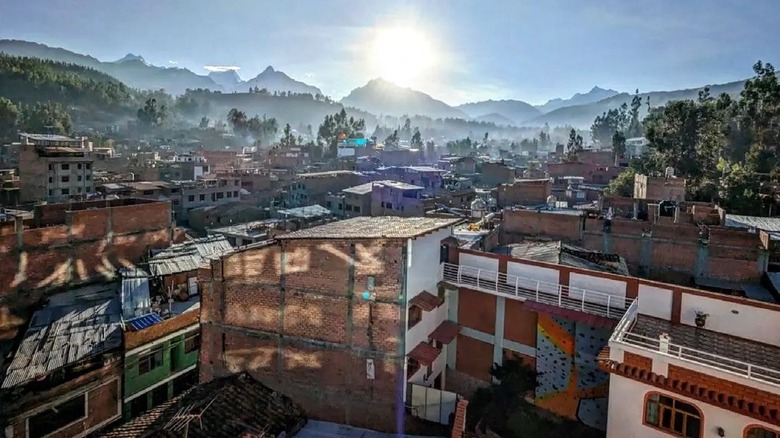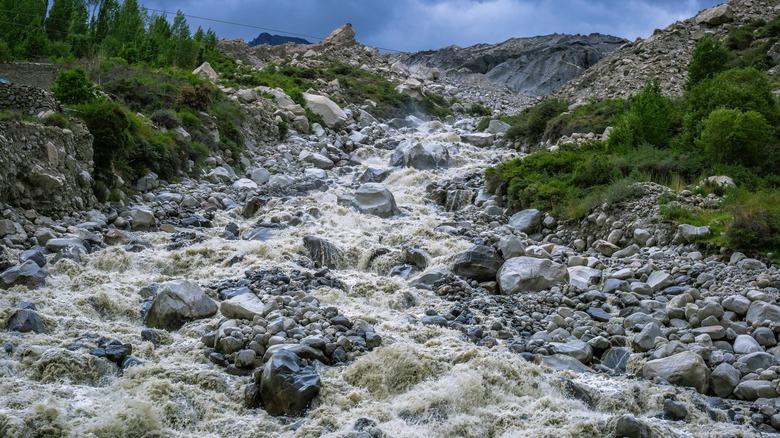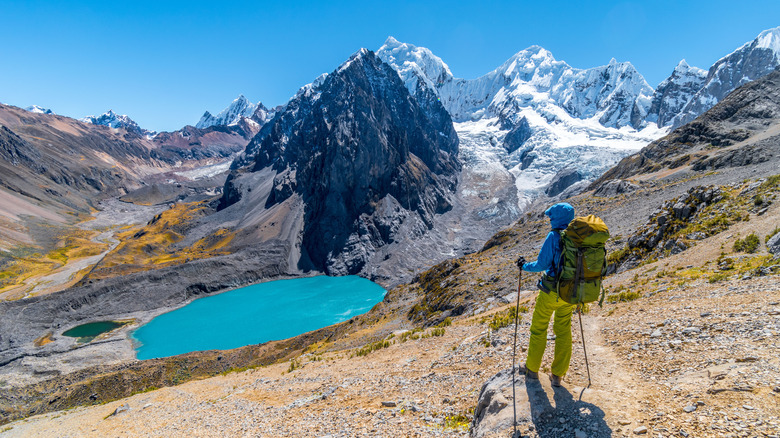Sparkling Lake Palcacocha lies beneath Peru’s towering Cordillera Blanca mountains at an elevation of 15,000 feet. The lake provides stunning views of the surrounding glaciers but hides a terrifying secret: it harbors the potential to unleash a catastrophic glacial lake outburst flood (GLOF) that could kill thousands and wipe out a major city. A GLOF occurs when an event such as a chunk of glacial ice falling into a lake causes it to release a gigantic wave of water that then rushes downhill, swallowing buildings, infrastructure, and any living beings that happen to be in its path. In the case of Lake Palcacocha, that would be Huaraz, a Peruvian city of around 120,000 people.
Palcacocha already demonstrated its lethal capabilities during the GLOF of 1941, when a flood wave containing approximately 10 million cubic feet of water hit Huaraz. The raging torrent of water and debris destroyed a third of the city and killed 1,800 of its inhabitants. “It’s probably the largest volume of water ever to impact a major urban settlement in the world,” said Steven Wagner, an archeologist from Huaraz, per The World. Since the 1941 event, glaciers around Lake Palcacocha have shrunk due to rising global temperatures. Meltwater flowing into the lake has caused it to swell to more than 34 times its 1970s size, greatly amplifying the risk of a GLOF.
What’s being done to protect Huaraz

brian.aniki / Instagram
As the lake has expanded, so has Huaraz — its population has more than quadrupled since the 1941 event — putting many more people at risk from a GLOF. Scientists at the University of Texas conducted flood wave modeling to demonstrate how a portion of a glacier falling into Lake Palcacocha could send a 90-foot-high wall of water toward the city. Even if Huaraz officials were able to alert residents of the impending disaster, they would only have about 30 minutes to evacuate, and tens of thousands could still perish. To mitigate the looming threat, local authorities constructed a dike to thwart overflow and erected a system of 10 large pipes to divert excess water from the lake. In addition, they monitor the lake via a live webcam and through local workers stationed at the lake, who continuously watch the glaciers for avalanches.
The underlying reason for the growing danger at Lake Palcacocha — anthropogenic climate change — is much trickier to address. But a promising approach some Huaraz locals are using is litigating against global polluters, like the German energy company RWE, to hold them accountable for the cost of protecting against GLOF-related property loss and other damages. Fortunately, these locals have science on their side: a groundbreaking 2021 study published in Nature Geoscience established the link between global greenhouse gas emissions, rising regional temperatures, glacial retreat around Lake Palcacocha, and the lake’s extreme bloating.
The need for culturally sensitive solutions

However, some in the Peruvian Andes have reservations about climate science and the technology that goes along with it. 20 miles from Huaraz, the town of Carhuaz also sits beneath several alarmingly swollen glacial lakes. A small GLOF from one of the lakes, Laguna 513, tore through some land close to Carhuaz in 2010. This event prompted a series of scientific papers and led to an international effort to install a sophisticated early warning system at Laguna 513. With its high-tech sensors, cameras, and relay antennae to facilitate rapid notifications with nearby communities about impending GLOF events, the system was one that other at-risk cities could emulate. It was even showcased at a Technology for Development conference.
Shortly after the model system became active, the weather went wild around Carhuaz, causing damage to farmland. Perhaps subscribing to local superstitions and assuming that the new technology was responsible for their failed crops, a group of locals went up into the hills and destroyed the equipment. This example highlights the need for cultural sensitivity in Peru when designing risk-mitigation strategies not only in Huaraz but in other areas at risk from GLOFs as well. Unfortunately, these are many — a recent study estimated that 15 million people around the world are currently exposed to GLOF events, half of whom reside in Peru, China, India, and Pakistan.

